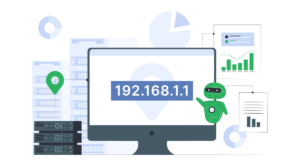In the ever-evolving landscape of cybersecurity, traditional security measures are no longer enough to combat sophisticated cyber threats. User and entity behavior analytics (UEBA) and SIEM has emerged as a powerful cybersecurity solution, leveraging algorithms and machine learning to detect anomalies in user and system behavior within a corporate network. Keep on reading for more information
What is UEBA?
User and entity behavior analytics (UEBA) is a cutting-edge cybersecurity solution that goes beyond monitoring human behavior alone. It extends its scope to include the behavior of routers, servers, and endpoints within the network. UEBA aims to identify peculiar or suspicious activities, deviations from normal patterns, or unusual usage that might indicate a potential cyber threat.
How UEBA Works?
UEBA works in two main modes: learning mode and testing mode. In learning mode, the system collects and analyzes data to establish baseline behavior for each user and entity. In testing mode, UEBA security algorithms apply statistical models to identify deviations and anomalies.
Key Components of UEBA
Analytics: UEBA collects data on normal behavior patterns of users and entities, creating profiles of application usage, communication, download activity, and network connectivity. Statistical models are then employed to detect unusual behavior.
Integration: Proper integration with existing security products and systems is vital for UEBA’s effectiveness. It compares data from various sources, such as logs, packet capture data, and other datasets, making the system more robust.
Presentation: UEBA communicates its findings and devises an appropriate response. This can range from simple alerts for further investigation to automated actions to mitigate potential cyberattacks.
Benefits of UEBA
Enhanced Detection: UEBA’s advanced analytics enable the detection of a broader range of cyber threats, including brute-force attacks, DDoS, insider threats, and compromised accounts. By identifying even the smallest anomalies, UEBA prevents cyberattacks from escalating into major breaches.
Proactive Defense: Traditional security measures are often reactive, responding after a breach has occurred. UEBA takes a proactive approach, spotting potential threats before they cause significant harm, thereby bolstering the organization’s cybersecurity posture.
Insider Threat Detection: UEBA excels in detecting insider threats, where employees misuse their access privileges. It can identify unusual activities and prevent data leaks or unauthorized access.
Real-time Response: With its ability to swiftly recognize anomalies, UEBA allows for immediate action. Automated responses can be triggered to disconnect users from the network or implement other security measures to counter potential threats.
Compliance Support: UEBA assists organizations in adhering to data protection and privacy regulations, such as GDPR, by monitoring data access and usage, ensuring compliance with industry standards.
Conclusion
Traditional security measures alone are no longer sufficient to safeguard organizations from cyberattacks. UEBA, with its advanced behavioral analytics and proactive approach, provides a significant advantage in detecting a wide range of cyber threats and preventing potential breaches. As cyber attackers grow more sophisticated, UEBA becomes an indispensable tool for companies seeking to stay ahead in the dynamic realm of cybersecurity.




